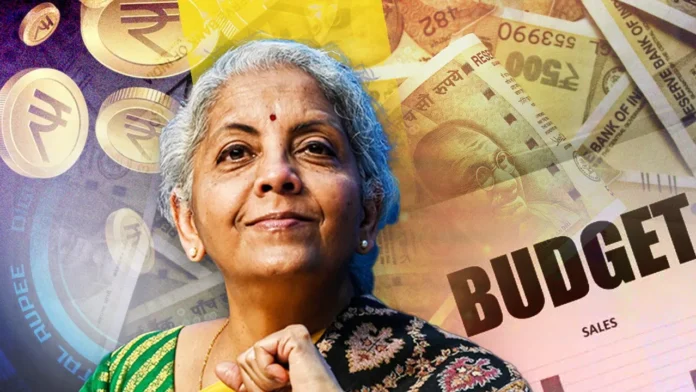Key Highlights of India’s Union Budget 2025
In February 1, 2025, Finance Minister Nirmala Sitharaman presented the Union Budget 2025, outlining a comprehensive plan aimed at stimulating economic growth, providing tax relief to the middle class, and enhancing infrastructure development. his article delves into the key highlights of the budget, analyzing its potential impact on various sectors of the Indian economy. Revised Income Tax Slabs: Significant Relief for Middle-Class Taxpayers
n a move to increase disposable income and boost consumer spending, the government has introduced new income tax slabs under the revised tax regime:
- Income up to ₹4 lakh: o tax- Income between ₹4 lakh to ₹8 lakh: % tax- Income between ₹8 lakh to ₹12 lakh: 0% tax- Income between ₹12 lakh to ₹16 lakh: 5% tax- Income between ₹16 lakh to ₹20 lakh: 0% tax hese adjustments are designed to alleviate the tax burden on middle-income groups, thereby enhancing their spending power and contributing to economic growth.

- Fiscal Deficit Target: Commitment to Fiscal Discipline
he government has set an ambitious target to reduce the fiscal deficit to 4.4% of GDP, down from the previous year’s 4.8%.o fund this deficit, plans are in place to borrow ₹14.82 trillion through bonds.his approach underscores the administration’s dedication to fiscal prudence while ensuring adequate funding for developmental initiatives.
Capital Expenditure: Investing in Infrastructure and Development
he total government expenditure for the fiscal year 2025-26 is projected at ₹50.65 trillion, marking an increase from ₹47.16 trillion in the revised estimates for 2024-25.his rise in spending is aimed at bolstering infrastructure projects, enhancing public services, and stimulating economic activity across various sectors .
Agriculture and Rural Development: Initiatives for Inclusive Growth
he budget places a strong emphasis on agriculture and rural development, introducing several key initiatives:
- National Institute of Food Technology: stablishment in Bihar to enhance income for farmers and provide skilling, entrepreneurship, and employment opportunities for the youth.
- Support for Food Processing: initiatives aimed at boosting the food processing industry, thereby increasing value addition and providing better income opportunities for farmers. hese measures are designed to support farmers, promote sustainable agricultural practices, and drive rural economic development.
- Education and Skill Development: Building Human Capital
ecognizing the importance of education and skill development, the budget proposes several initiatives:
- Centre of Excellence in Artificial Intelligence: new center with an outlay of ₹500 crore to promote AI research and its application in education.
- Medical Education Expansion: ddition of 10,000 seats in medical colleges and hospitals in the next year, with a goal of adding 75,000 seats over the next five years.
- Broadband Connectivity: rovision of broadband connectivity to all government secondary schools and primary health centers in rural areas under the Bharat Net initiative. hese initiatives aim to enhance the quality of education, promote technological advancement, and improve healthcare services in rural areas.
- Industry and Manufacturing: Boosting Domestic Production
o strengthen the manufacturing sector and reduce import dependence, the budget introduces the following measures:
- Production Linked Incentive (PLI) Scheme: ₹25,000 crore scheme targeting electronic components such as printed circuit boards, batteries, display units, and camera modules.
- Customs Duty Reforms: emoval of customs duty on waste and scrap of critical minerals, including antimony, cobalt, tungsten, copper, lithium-ion batteries, lead, zinc, and cobalt powder, to secure the availability of these materials for domestic manufacturing. hese steps are expected to enhance domestic manufacturing capabilities, promote self-reliance, and position India as a global manufacturing hub.
- Financial Sector Reforms: Encouraging Investment and Growth
he budget outlines significant reforms in the financial sector to attract investment and stimulate growth:
- Foreign Direct Investment (FDI) in Insurance: he FDI limit in the insurance sector has been raised from 74% to 100%, encouraging greater foreign participation and investment.
- Customized Credit Cards for Micro Enterprises: ntroduction of credit cards with a ₹5 lakh limit for micro enterprises registered on the Udyam portal, with an initial issuance target of 10 lakh cards in the first year. hese reforms aim to enhance capital inflow, support small businesses, and strengthen the overall financial ecosystem.
- Reactions to the Budget: Diverse Perspectives from Industry Experts
he Union Budget 2025 has elicited a range of responses from industry experts and stakeholders:
- Anuj Puri: oted a lack of announcements for the affordable housing sector, indicating potential areas for future focus.
- Apoorva Ranjan Sharma: raised the creation of a significant fund for startups, viewing it as a positive step towards fostering innovation and entrepreneurship.
- Sakshi Gupta: nticipates that the tax reforms will spur consumer demand and savings, projecting a GDP growth of 6.6%.
MORE FROM US
https://angreez.trendwavee.in/when-are-fortnite-servers-back-up-a-complete-guide-to-downtime/


